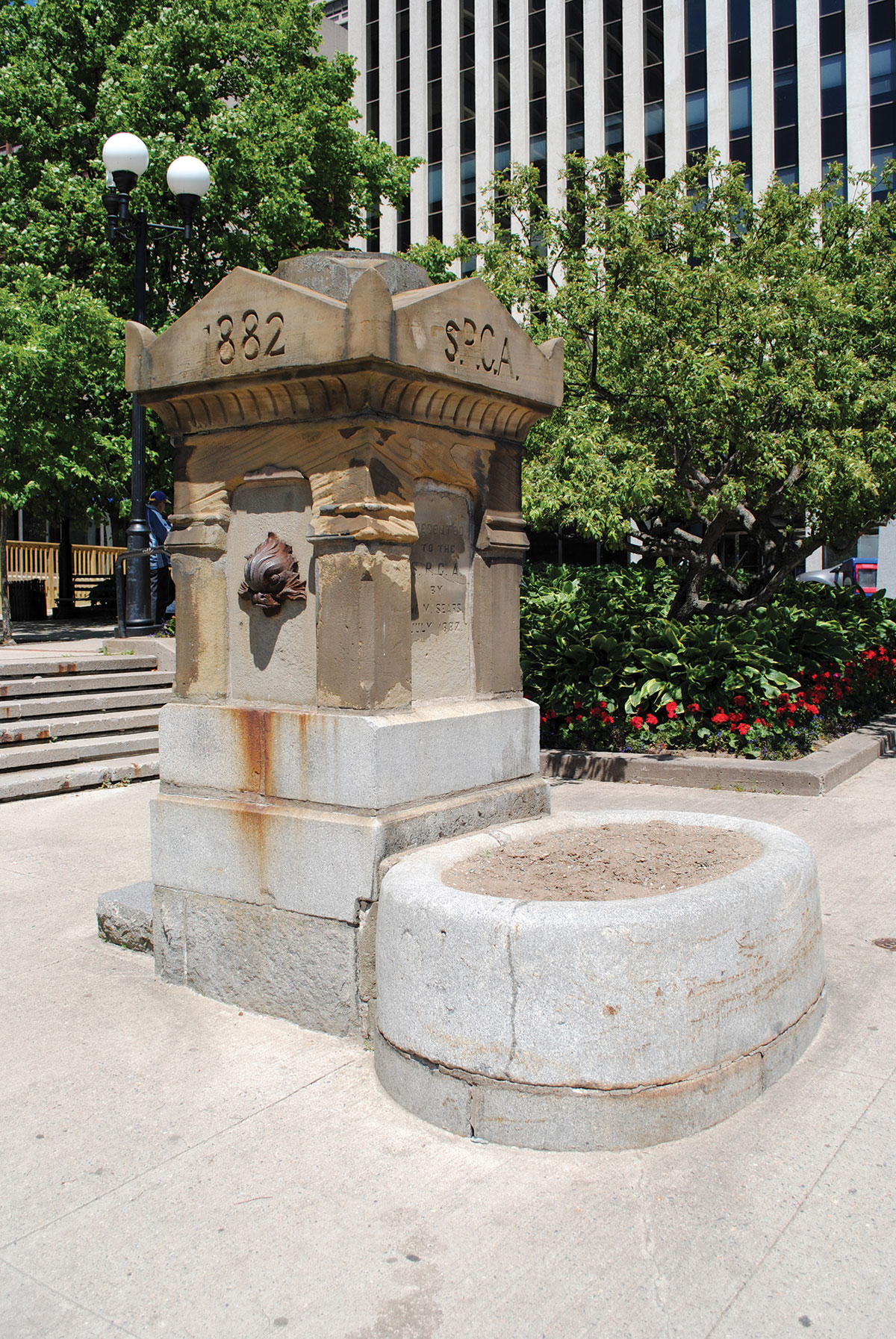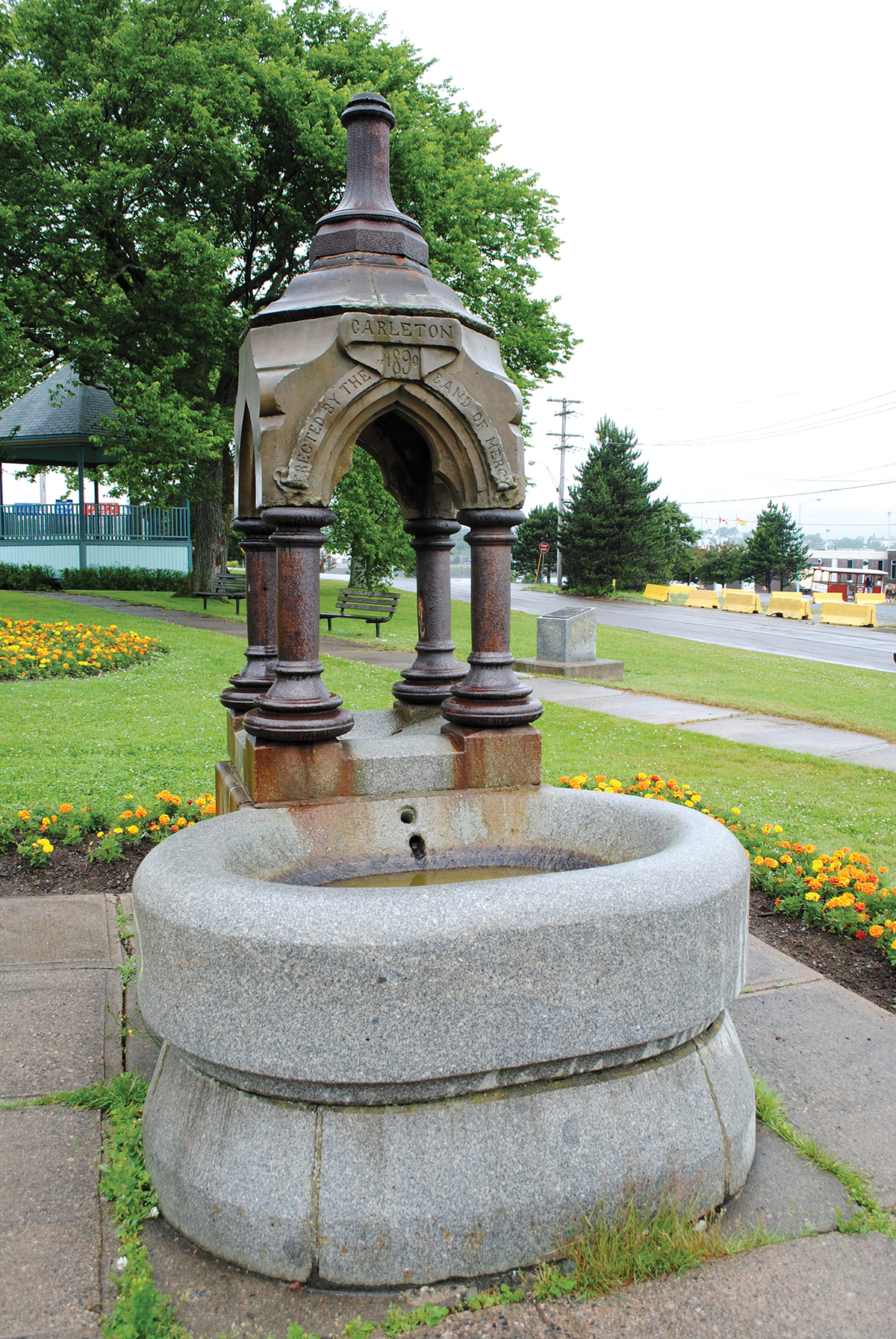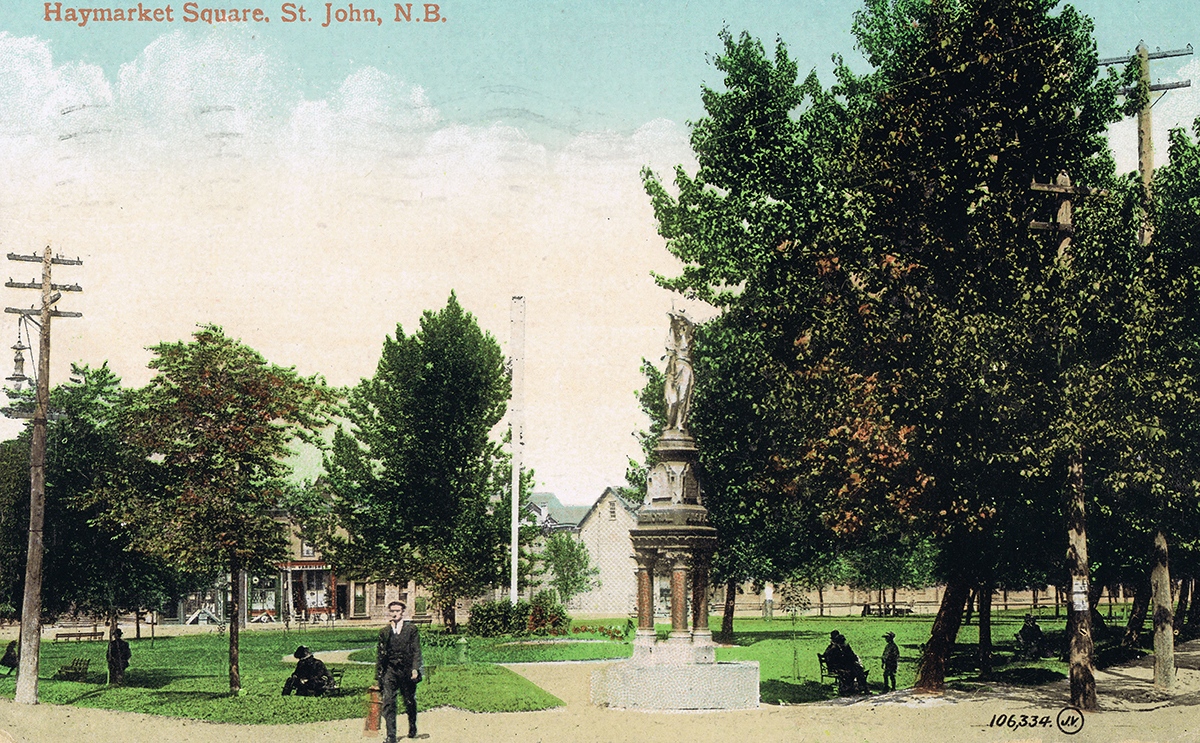
When Peter Josselyn moved back to his hometown of Saint John, New Brunswick, in 2009, he wanted to find an artistic outlet to keep him sane in a city he now found more sedate than what he’d become accustomed to after a decade in Toronto. “I wanted to, in some respects, be the sort of trouble that I felt needs to exist in this city,” he says. Josselyn found inspiration in a historic horse trough/drinking fountain located in front of city hall, and the Saint John Society for the Preservation of Horse Troughs and Water Fountains was born.
Originally donated to the city in 1882, by the local chapter of the Society for the Prevention of Cruelty to Animals, the trough has not been connected to running water since it was moved to its current location, in front of city hall, in the early nineteen-seventies. Today, it serves as a flower planter and unofficial garbage bin. If Josselyn has his way, the trough will someday flow again, for horses and humans alike. “The fountain really hasn’t fallen into disrepair, it’s just fallen into misuse,” he says. “The city has banned bottled water, and presumably that ban means they’ve also banned bottled water for horses. So I think they should make water fountains and horse troughs available. They’re multipurpose. They could be used by large dogs, or even rickshaw drivers—they’re kind of like horses.”

Dating from 1890, a fountain donated to the town of Carleton (now Saint John’s west side) by the Band of Mercy is the only other remaining trough in the city.

A fountain donated by the Polymorphian Society once sat in the city’s Haymarket Square.
Although horses gave way to cars some time ago, and the Saint John Police Force has no mounted unit, the port city is not without its equine population. “There are horses that haul around American tourists in fake-looking historical trolleys,” Josselyn says. “The estimated cruise ship traffic in the next five years is three hundred thousand tourists annually. What better to add to the historical experience than a horse just meandering over and maybe taking a drink of water—because, as we know, you can lead a horse to water, but you can’t make it drink. The horse may take a drink. We don’t know.”
To date, the society’s campaign to restore this and the city’s other remaining historical fountain has amounted to little more than a Facebook page, a Twitter feed, and a series of signs stuck into the S.P.C.A. fountain’s flowerbed, featuring the slogan, “HEY—IT’S FOR HORSES!”
“The signs in the trough are to let people know this isn’t a flower planter, and also to remind them that horses can’t drink flowers,” Josselyn says. “Our signs are quite popular. I notice that they keep getting stolen. Or potentially removed by people who think we’re agitators.”
Josselyn says he hopes to step up his campaign soon, possibly through the addition of a Web site. He might even contact a politician.